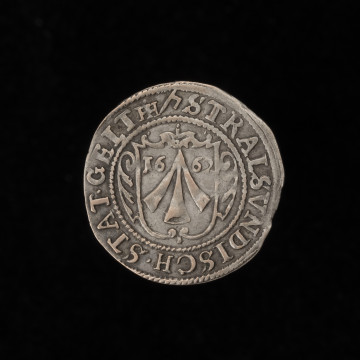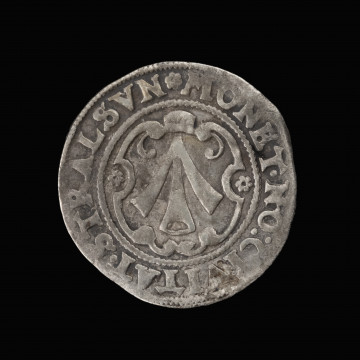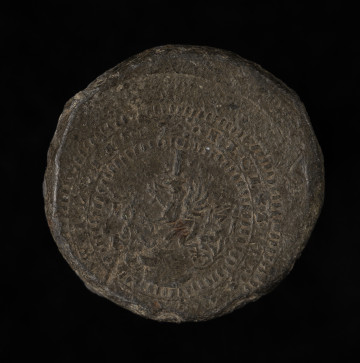
1/24 of a thaler (groschen)
1666
National Museum in Szczecin
Part of the collection: Pomeranian coins
The last stage of the operation of the mint in Szczecin fell for the reign of Charles XII (1697-1718). Following the monetary scandal from the rule of the previous king, the Pomeranian provincial government was not interested in resuming the issue of money. In 1705, however, they agreed to the proposal of mintmaster Jan Menamies and allowed him to mint coins to the standard in force. Despite hopes to the contrary, the activity was not profitable and in 1709 the mint was shut down. Witten coins, the finest coins in circulation, were minted only in 1707. Production was severely limited due to the lack of silver, so decision was made to remint the old, low-value groschen from the Kipper und Wipper crisis (1620s) . This proves the desperation of the mintmaster and the extremely difficult situation on the market. Issues were not able to meet the demand for divisional currency, so low-value money from neighboring countries flowed into the country. Wittens of Charles XII have a modest look and in this respect do not continue the Pomeranian tradition for this denomination. All earlier wittens, minted between the reigns of Bogislaw X (1454–1523) and Charles XI (1655-1597), bear a clear symbol of Pomerania – a crowned griffin. Apparently, neither the provincial government, subordinated to the interests of Sweden, nor the mintmaster, who came from Rostock and was interested mainly in profit, cared about the symbol of Pomerania. Genowefa Horoszko
Other names
witten
Author / creator
Object type
witten (coin)
Technique
coining
Material
silver
Origin / acquisition method
purchase
Creation time / dating
Creation / finding place
Owner
Muzeum Narodowe w Szczecinie
Identification number
Location / status

1666
National Museum in Szczecin

1647
National Museum in Szczecin

1631
National Museum in Szczecin
DISCOVER this TOPIC
Castle Museum in Łańcut
DISCOVER this PATH
Educational path